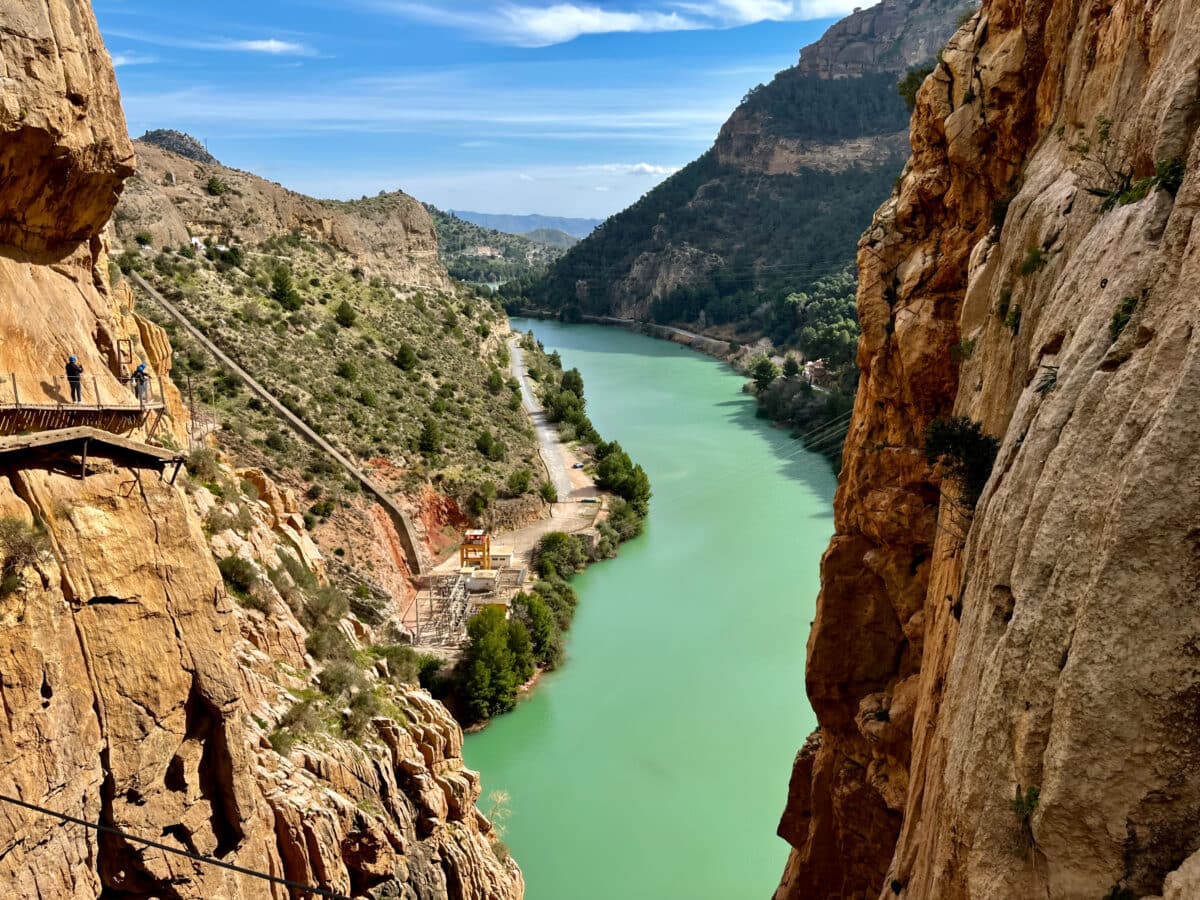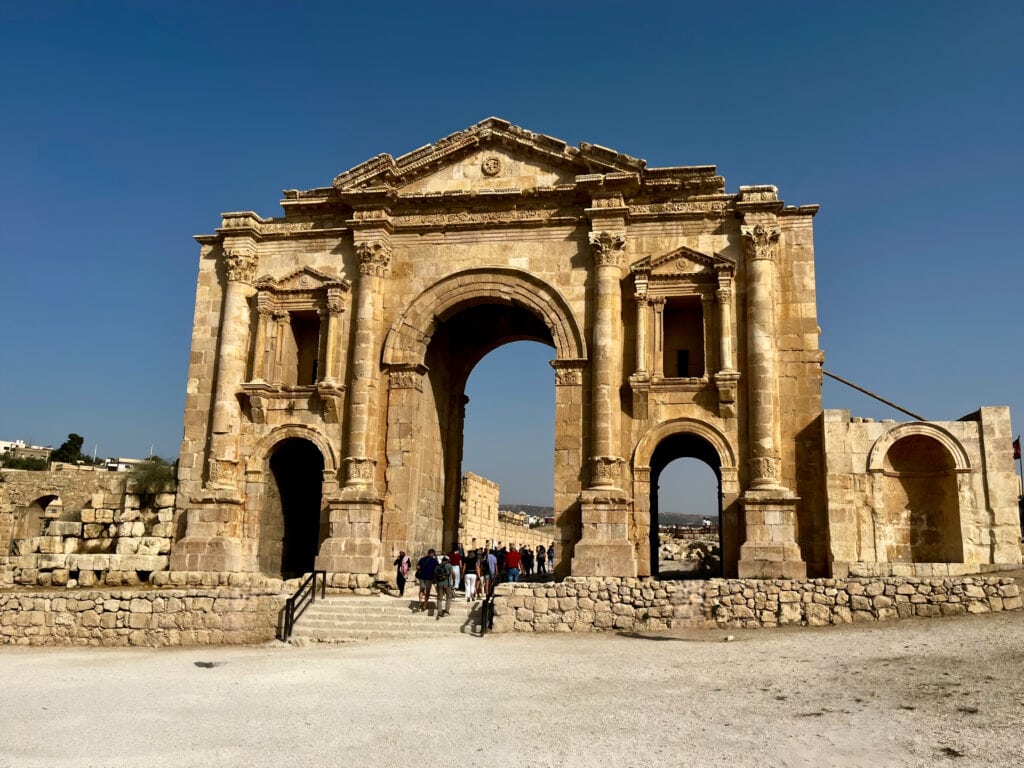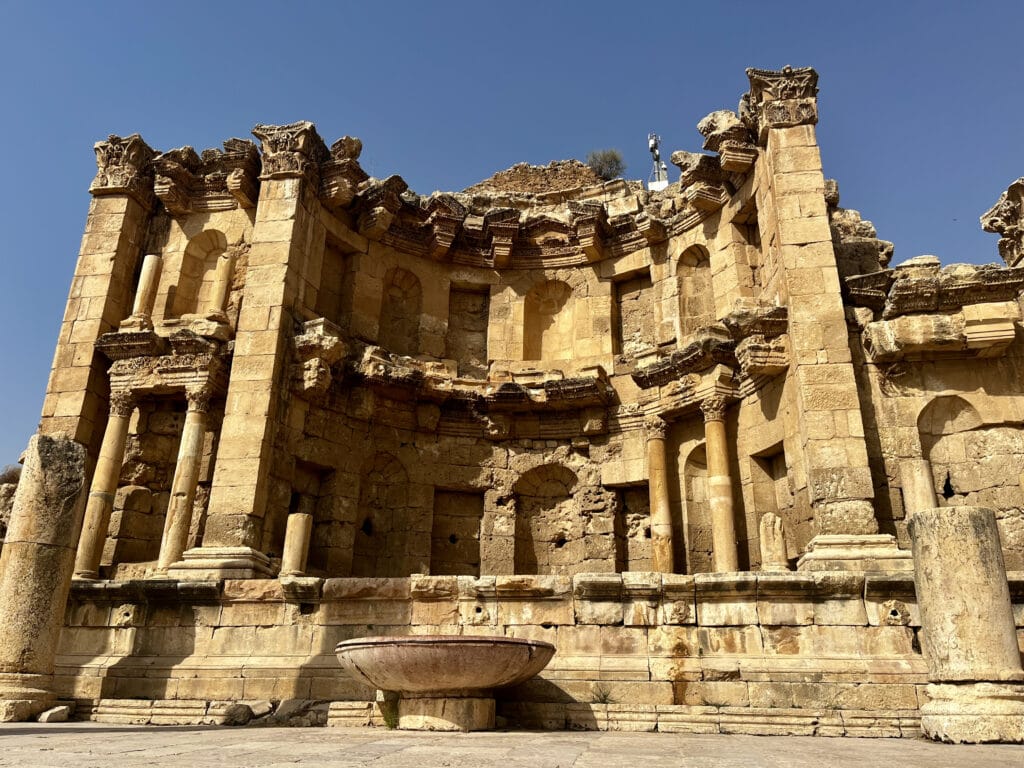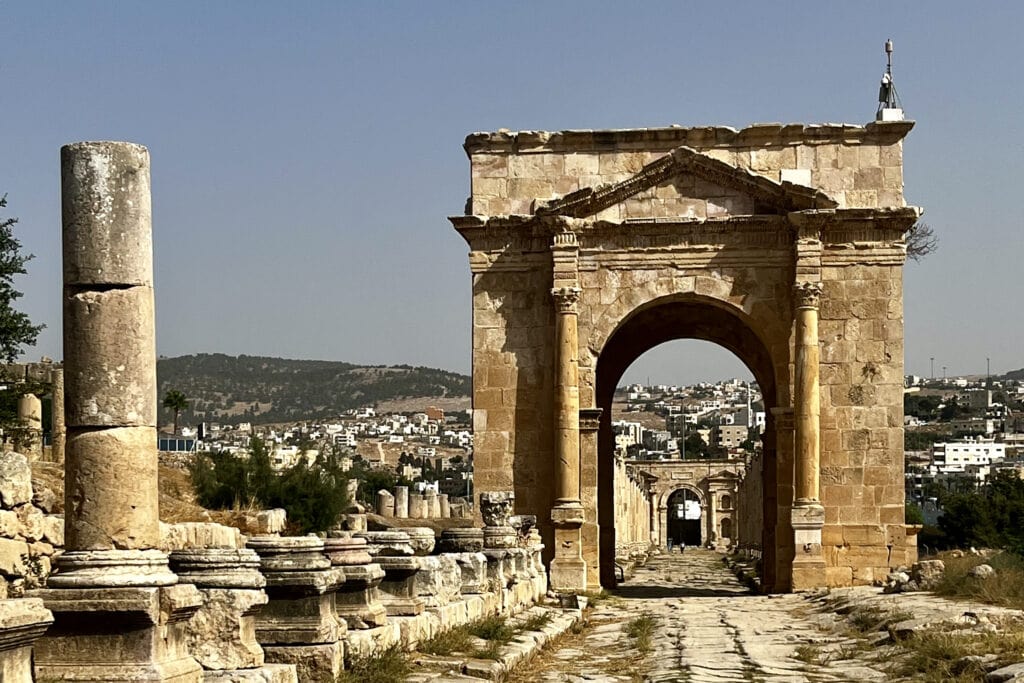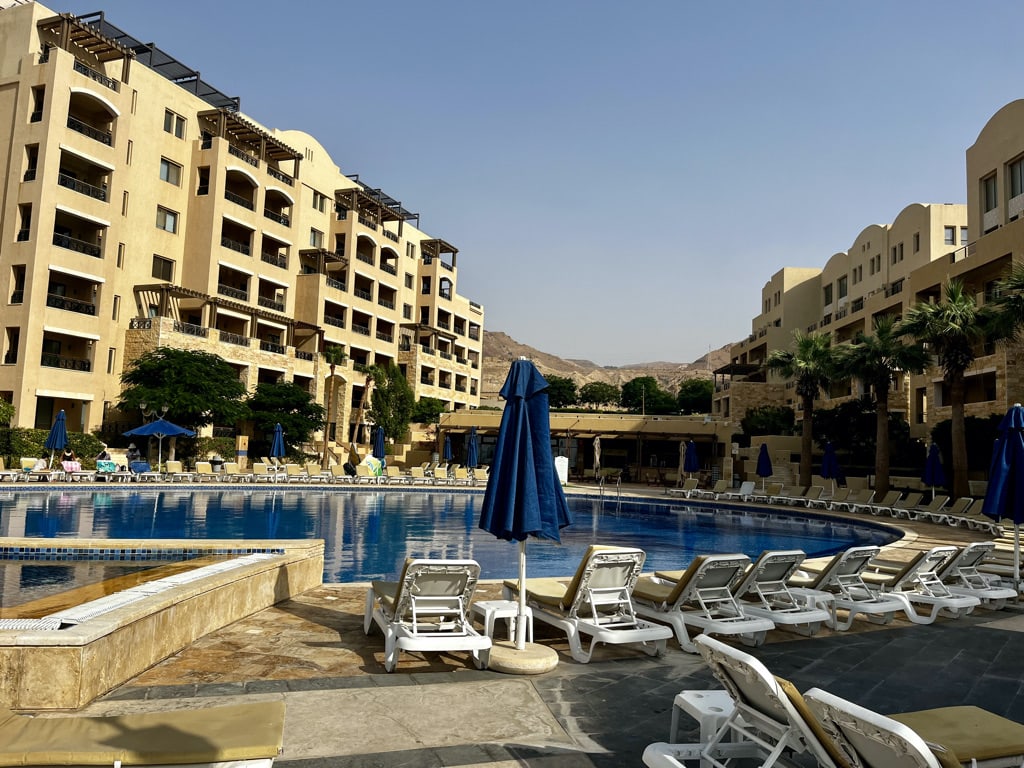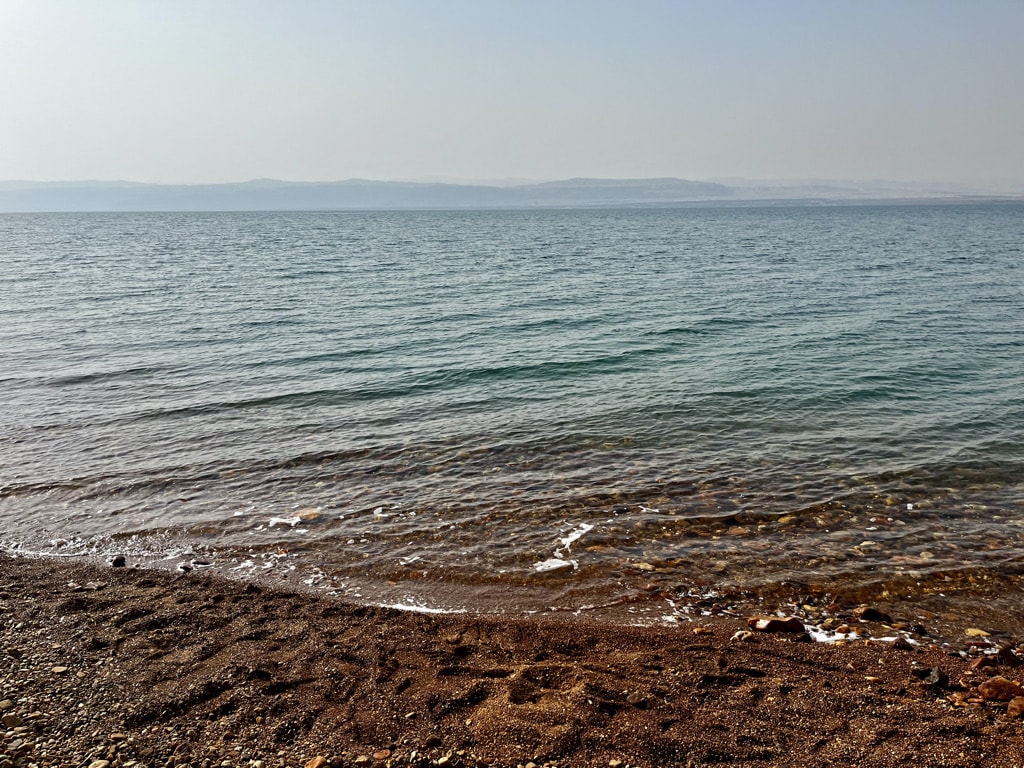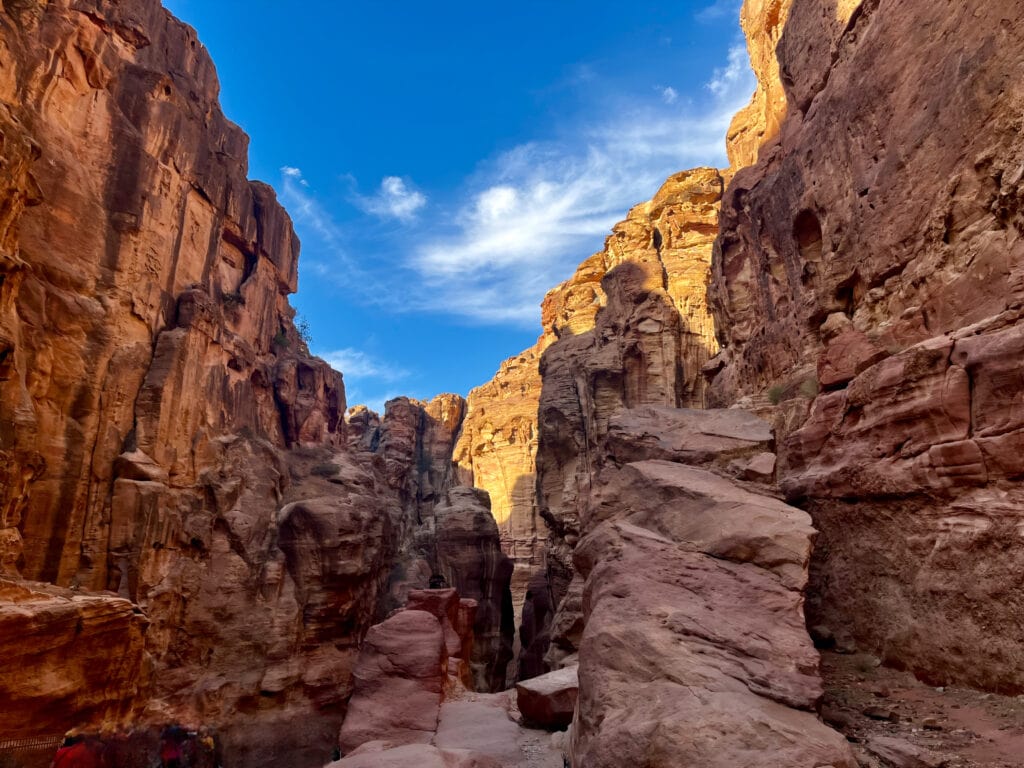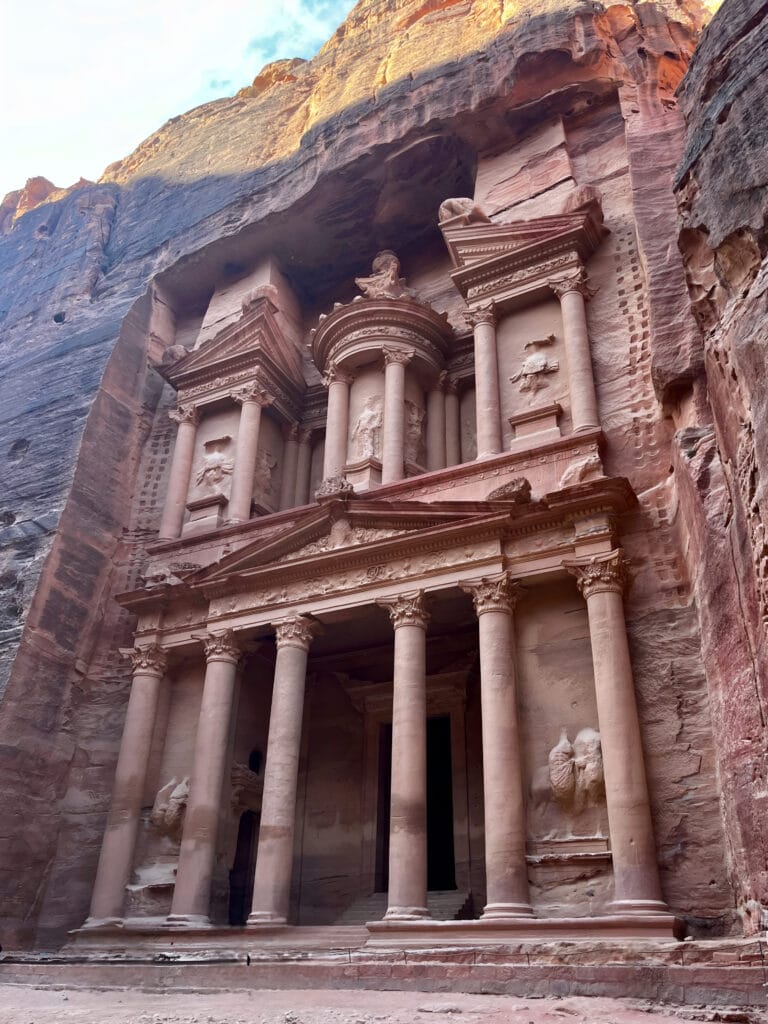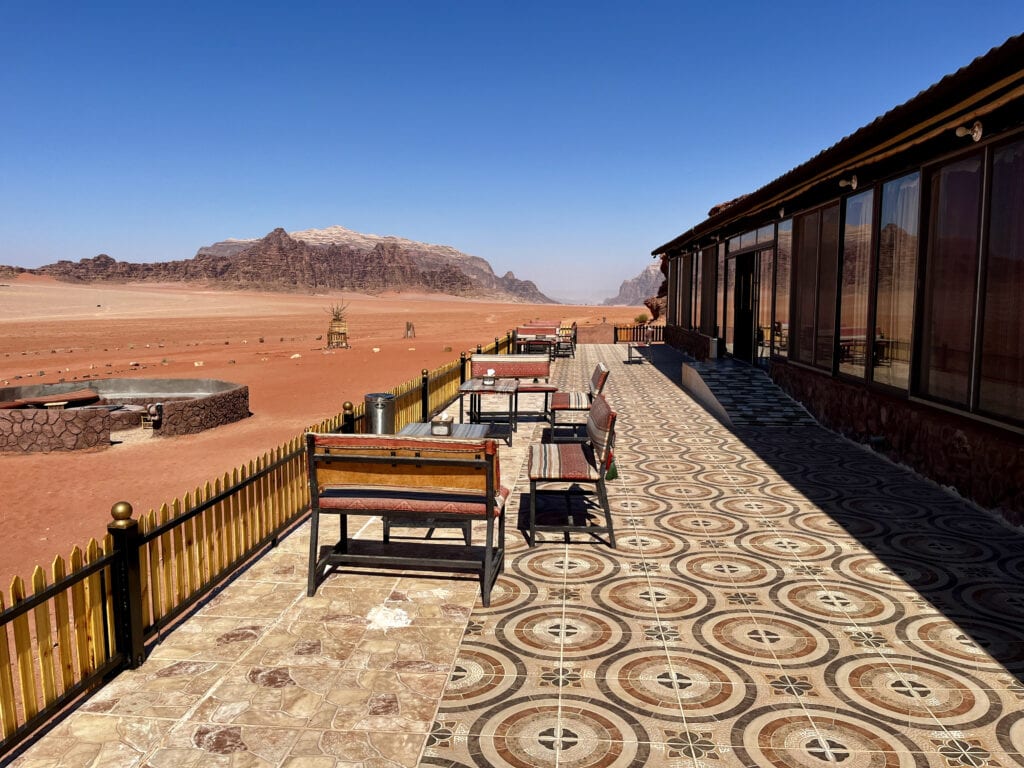Escape Winter in Andalusia: 8-Day Road Trip to Spain 🇪🇸
February is the time when I would normally plan a skiing trip. However, this year, we decided to try something different and escape the winter in Prague. Our choice was doing a road trip to Spain, Andalusia. I booked tickets to Malaga and began preparing the itinerary. We had two options: either move from one place to another, which always involves continuous check-ins and check-outs, or stay in Malaga and do day trips. I chose to stay in Malaga and move only towards the end of our stay for one night to Seville.
Table of Contents
Practical insights:
Arrival to Spain:
It’s very straightforward for us, Europeans, as Spain is part of the Schengen zone. Non-EU citizens need to check the requirements related to their particular passports (for Spain but also for UK, if planning a trip to Gibraltar).
We travel around the EU with IDs only. Nevertheless, I was lucky to talk to a friend before our trip. I mentioned that we would drive to Gibraltar, and he said, ‘Well, don’t fall into the same trap as I did. You need to have passports because the UK is not part of the EU anymore.’ It was pretty fortunate, as I might have left our passports back at home.
Currency:
The currency is Euro, and ATMs are easily accessible. Paying with a card is common everywhere.
Driving:
Driving in Spain is easy, similar to any other EU country. The only exception that confused me a bit was the many lanes in roundabouts in big cities. For that, I always tried to stay in the outermost lane and be cautious about other cars and drivers. Petrol stations are in close proximity to each other.
Parking:
Can be difficult, especially in big cities. The underground paid garages are very narrow, so renting a small car is a wise choice.
Mobile Data:
EU citizens enjoy “roam-like-at-home,” so I didn’t have to worry about purchasing additional data packages. For everyone outside the EU, I recommend using the Airalo app, which allows you to download a data e-SIM card for countries worldwide. It’s easy and hassle-free.”
Day 1-2: Malaga
We arrived in Malaga in the evening and checked into our Malaga Sun apartment. I made sure that we would have private parking available. The garage was modern and easy to park in.
Malaga is a very pleasant coastal city, ideal for just walking around.
The Beachfront Promenade: It stretches from the city center all the way to Malaga beach. People are walking or jogging around. Muelle Uno, the open-air shopping mall, is located in Malaga Port. The place is lively during the day and in the evenings, but don’t expect to have coffee there in the morning. The only place we found open around 9 am was a Dunkin’ Donuts stand.
Roman Theater: Considered the oldest monument in Malaga, it was built in the 1st century BC under the rule of Emperor Augustus. It is situated underneath the Alcazaba fortress and was discovered in 1951, after being buried for several centuries.
Alcazaba: Positioned atop the hill, the fortress is assumed to be one of the best-preserved in Spain. Its origin dates back to the 11th century. There is quite a bit of a walk to reach the entrance, but it is worth it. After purchasing our tickets, we freely walked around, exploring the different parts and enjoying the views of the city.



Walking on the Beach Promenade, we reached the City Center.
The main landmark to visit is the Malaga Cathedral. It was built between 1528 and 1782, and the interior is in Renaissance style. The cathedral’s north tower is highly visible, standing at 84m high, while the south tower remains unfinished.
Calle Larios is the main pedestrian shopping street and the true heart of Malaga.
Nevertheless, for shopping enthusiasts, there’s another tip. There is a huge shopping complex, including McArthurGlen Designer Outlet just outside Malaga, next to the airport. We drove there from our apartment and had a half day of shopping.
In connection to Malaga, I also need to mention that it is the city where the famous Pablo Picasso was born. There is a Picasso Museum in the city that fans of this artist might want to visit.




Day 3: Gibraltar
Malaga – Gibraltar: 140km, 1h 45min
The trip from Malaga to Gibraltar was easy, driving on the highway. We parked the car at Sta Bárbara Car Park at the border between Gibraltar and Spain on the Spanish side. The reasons for that are straightforward – it is cheaper and more comfortable than navigating the narrow streets of Gibraltar. We didn’t have to book the parking spot since we visited outside the main tourist season.
We walked to the border post from the car park. Right after crossing the border, there was a bus stop. We decided to buy a day travel pass to make use of the bus during the day. The bus took us to a very close proximity to the Gibraltar cable car station.
Gibraltar has a history full of different people and events. The place has been home to various groups, like the Phoenicians and Romans, a long time ago. It became part of the Moorish Empire, then went back and forth between Muslim and Christian rule. In 1713, it became British through the Treaty of Utrecht. Throughout its history, Gibraltar’s culture has been influenced by the British, Spanish, Genoese, and Jewish communities.
The cable car up the Gibraltar Rock
It took us to the highest point of the Gibraltar Rock. Unfortunately, clouds covered part of it when we visited, so we didn’t get the full view that would be there on clear days. Walking on the top is amazing, but one needs to beware of the monkeys. I wasn’t cautious enough, and one of them unexpectedly landed behind my neck. I’m not sure who screamed more, me or the monkey 😂. After exploring the top, we started to descend towards Michael’s Cave.
The cave, with its stalactite and stalagmite formations, has a rich history. It served as a refuge, later as a military hospital during World War II, and now is a popular tourist spot.
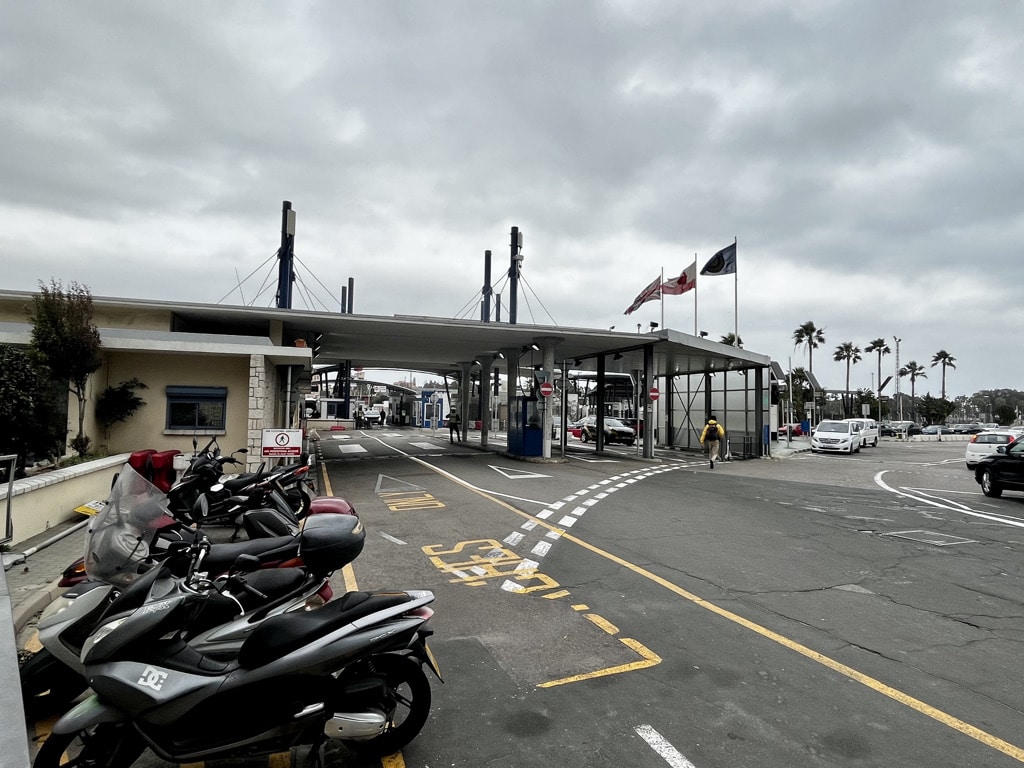


After visiting the cave, we walked down to the city center. Even though people drive on the right-hand side in Gibraltar (as elsewhere in Europe), the city atmosphere feels very much “British.” We found a local pub to have a late lunch and then started heading back to the border post.
Once we were on the bus, we had to stop to allow a plane landing to pass the runway. Gibraltar International Airport’s runway is unique because it intersects with a major road, Winston Churchill Avenue. When an aircraft needs to take off or land, road traffic is temporarily stopped, and barriers are activated to ensure a safe runway passage.


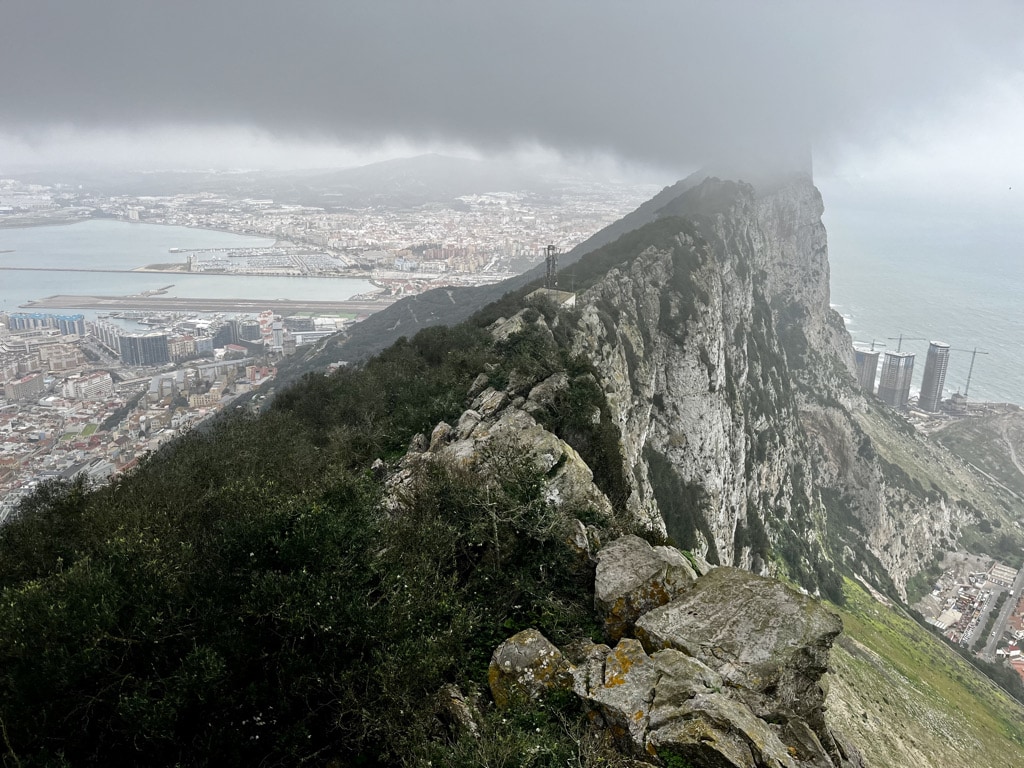
Day 4: Ronda
Malaga – Ronda: 102km, 1,5hours
Ronda is not a big city, but it is definitely worth visiting. Perched above a deep gorge, the new and old city are connected by the famous and picturesque Puente Nuevo bridge. Ronda is considered the cradle of bullfighting.
Upon arriving in Ronda, we parked the car at Parking Publico. It took about 7 minutes to walk to the first point of interest – Plaza de Toros de Ronda.
Plaza de Toros
It is a historic bullring built in the 18th century, also being one of the oldest and most iconic bullrings in Spain. We purchased entry tickets on the spot, got the headphone guide, and started to explore the place. We walked through the bullring, explored the bullfighters’ rooms, and witnessed the amazing riding arena of The Royal Cavalry of Ronda, which was established in 1573.



Puente Nuovo bridge
After exploring the Plaza des Torres, we walked towards the Puente Nuovo bridge.
It is impressive. Completed in 1793, it connects the old Moorish district of Ronda with the modern part of the town. It is often considered one of the most impressive bridges in Spain.
For the rest of our stay, we continued wandering around the Old Town with its narrow winding streets and whitewashed buildings.


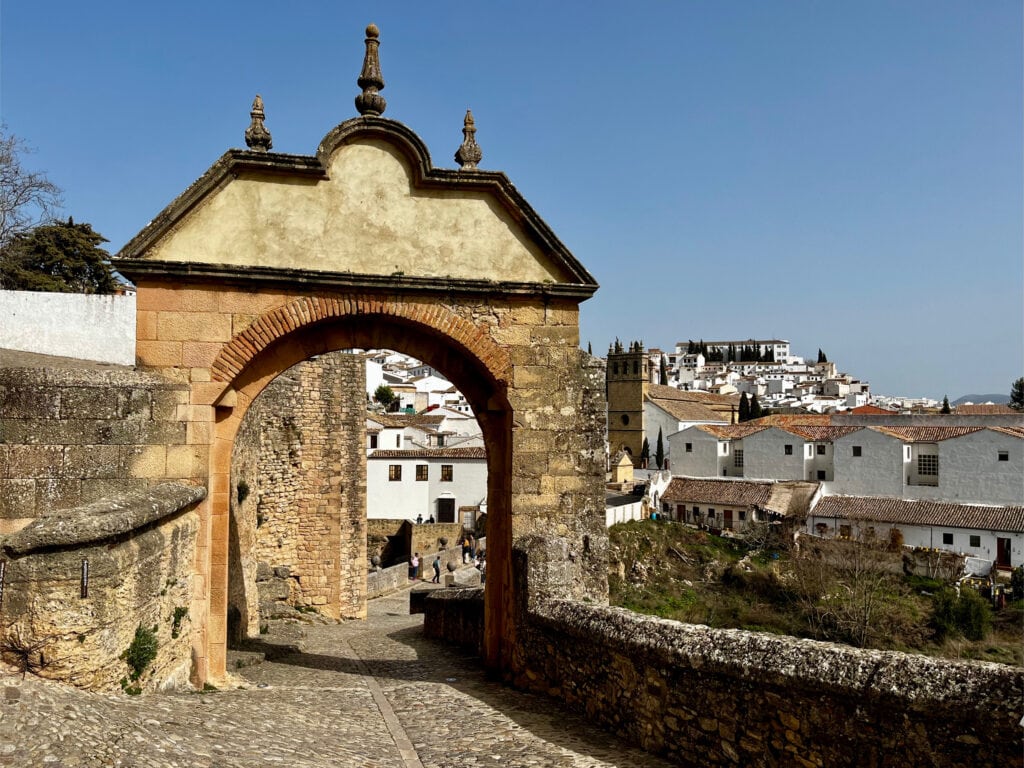

Day 5: Caminito Del Rey
Malaga – Caminito Del Rey: 61km, 1hour
The next day, we decided to take a break from cultural experiences and enjoy some nature. Located about an hour’s drive from Malaga is Caminito Del Rey, often referred to as the ‘King’s Little Pathway.’ It is a walkway build in the walls of Gaitanes gorge. It was originally constructed for hydroelectric power plant workers. The name comes from the nickname of King Alfonso XIII, who visited in 1921.
At one point in time, the trail was damaged and became unusable, causing the connection between villages to vanish. The reconstruction began in 2014, and the trail was reopened to the public in 2015
We booked our entry tickets online several days in advance, as the number of visitors per day is limited.
Arriving at the Visitor Reception Center parking about 1.5 hours before our entry time, we caught a shuttle bus. A 20-minute bus ride took us to the restaurant/kiosk bus stop, and from there, it was a 20-minute walk to the canyon area and the start of the walking trail.
We waited for our time slot, we received helmets and headphones, and followed our guide. The walk, which takes about 2 hours, requires carrying water. We visited in February when the weather was perfect for the walk. As the entire path is exposed to the sun it must get hot during summer. The views of the canyon are breathtaking.



At the end of the trail, we returned the helmets and walked through a small village toward the shuttle bus stop. It then transported us back to the Visitor Center where we had parked our car.
Day 6: Granada
Malaga – Granada: 132km, 1,5 hour
Granada, situated at the foothills of the Sierra Nevada mountains, is best known for the Moorish palace, Alhambra.
My luck kicked in when I checked the official website in the morning, realizing most visitor slots for the day were taken. I organized our tickets, even though the process os a bit complicated – registering, and entering all details, including ID numbers. This a common system, I got across in other places in Spain, but not the easiest for on-the-spot reservations.
I wanted to park in the city center for a walk through town towards Alhambra. I chose Parking Angel Ganivet. Honestly, it is a very tight garage and it was difficult to drive in and out even with a small car.
The Alcaiceria
As our first stop, we explored Alcaiceria, the Great Bazaar of Granada. Established in the 14th century, when Emperor Justinian granted Arab traders permission to open the market in Granada. They sold silk, perfumes, spices, and more in over 200 shops. Unfortunately, a fire destroyed the original market in the 19th century, and the current version is much smaller. Nevertheless, once you step in, it retains a unique atmosphere and charm.
Granada Cathedral
Granada Cathedral is situated in the heart of the city. Built in the 16th century, its foundations are Gothic, but the cathedral itself is constructed in the Renaissance style. The interior is impressive and definitely worth a visit.


Plaza Nueva
It is one of the city’s oldest and liveliest squares. Surrounded by historic buildings and charming outdoor cafes, it offers a vibrant atmosphere. We set in the middle of February in one of the outside restaurants enjoying a coffee and soaking up the sun.
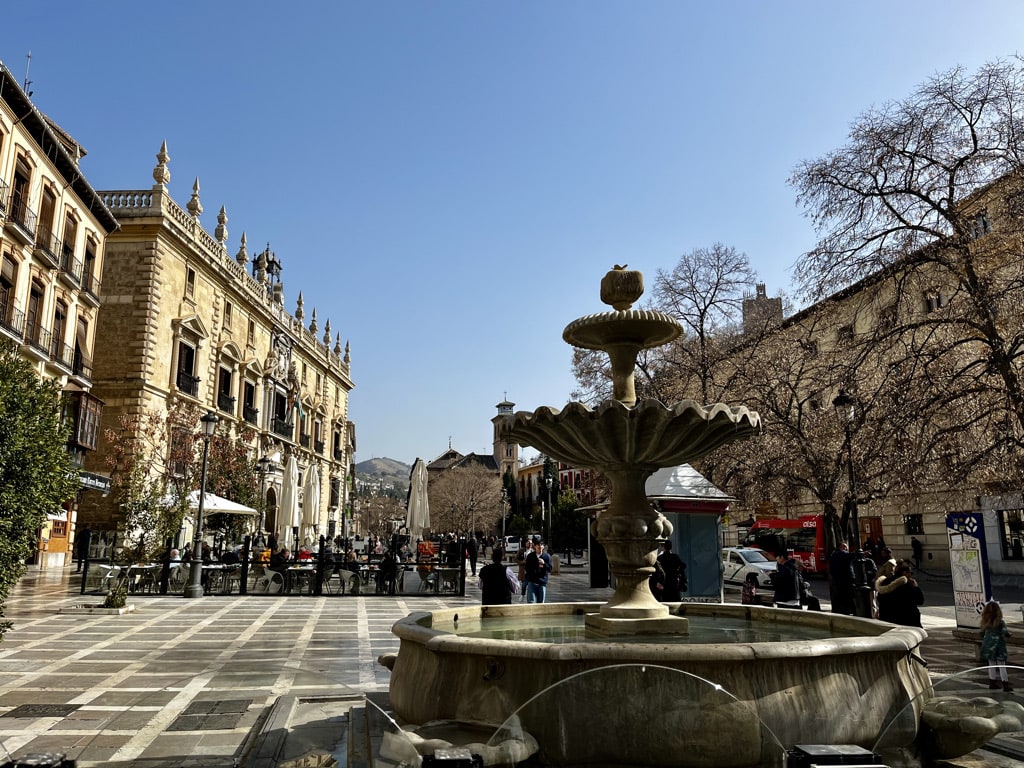
Alhambra
Alhambra truly stands out as a must-visit in Granada. Located on the top of a hill, it offers beautiful views of the city. Constructed primarily during the 13th and 14th centuries, it played various roles, serving as a palace, fortress, and citadel. The complex is massive and requires a few hours of exploration—we wandered through the Generalife gardens, and the Alcazaba fortress, and, at our designated time, visited the Nasrid Palaces, with its stunning mosaics.




Day 7: Seville
Malaga – Seville: 210km, 2,5hours
Seville was the only destination where I felt a day trip might be too ambitious. We checked out of our apartment in Malaga and spent the final two days in Seville. As always, I ensured our accommodation had a private parking space, and once again, it proved to be a wise choice.
I found the Catalonia Santa Justa hotel, located approximately 25 minutes on foot from the city center. When we walked through the streets of Seville’s historic center, I only then realized how narrow they are and how challenging it would be to drive through them.
Seville is a bustling tourist town even in February. It’s advisable to book tickets online for major attractions like the Cathedral de Sevilla, Giralda Tower, and Alcázar. Unfortunately, I didn’t do so, and we found ourselves waiting in a long queue. As mentioned earlier, the online ticketing system can be complicated. While in line, I attempted to book tickets online, but the process of filling in personal details, including ID numbers, made me decide it was easier to wait.
We walked from the hotel to the city, and our first stop was Metropol Parasol. It’s a super modern and the world’s largest wooden structure, designed by Jurgen Mayer in 2005. On the ground floor, there’s an entrance to the Antiquarium, an archaeological site with remains from the Roman era. Next to the Antiquarium is the entrance and lift to the lookout point.
We continued towards Casa de Pilatos, one of the first examples of Andalusian architecture. Then, we navigated through the narrow streets of Barrio de Santa Cruz, the former Jewish quarter, towards the Catedral de Sevilla.


Catedral de Sevilla
It is the third-largest cathedral in the world and a UNESCO Heritage Site. Built in Gothic and Renaissance styles, the Giralda Tower dominates the city’s skyline. The cathedral stands on the site of a former mosque, with the Giralda Tower occupying the location of the former minaret. Inside the cathedral, you can find the tomb of Christopher Columbus.”

Alcazár
The stunning palace complex, originally built as a fortress by the Moors in the 10th century. It later underwent expansions and transformations, resulting in a mix of Islamic, Gothic, Renaissance, and Mudejar styles. We walked through the complex while admiring tilework, halls, courtyards, and gardens.
The intricate tilework, lush gardens, and ornate chambers captivate visitors as they wander through the halls and courtyards.



Day 8: Seville – Malaga – end of our road trip to Spain, Andalusia
On the last day, we packed all our belongings into the car, checked out of the hotel, and left the car in their garage. The final part of the city we planned to explore was Plaza de España.
Plaza de España
It was the highlight of the visit to Seville for me. When we arrived at the Plaza, I couldn’t help but say ‘WOW.’ Built for the Ibero-American Exposition of 1929, the semi-circular building with a central canal is decorated with colorful tiles representing different regions of Spain. The bridges over the canal lead to the central building, featuring towers, galleries, and a series of benches showcasing beautiful ceramic tilework.
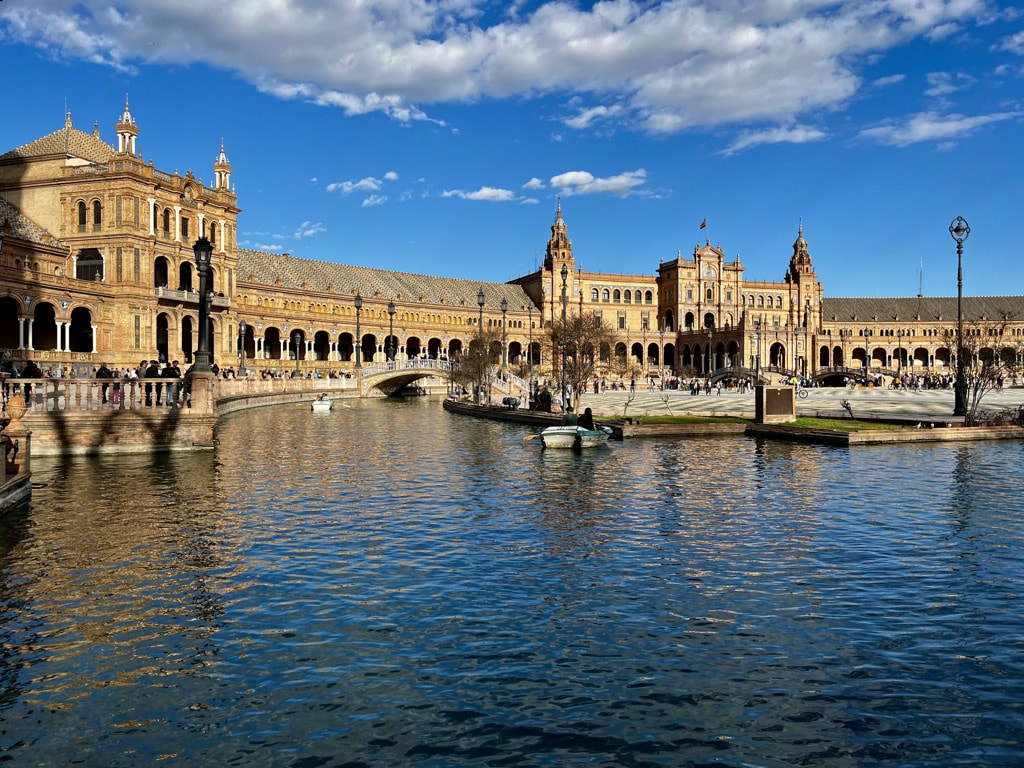


At lunchtime, we bid farewell to Seville and drove back to Malaga. After returning the car at the airport, we checked in for our flight back to Prague.
